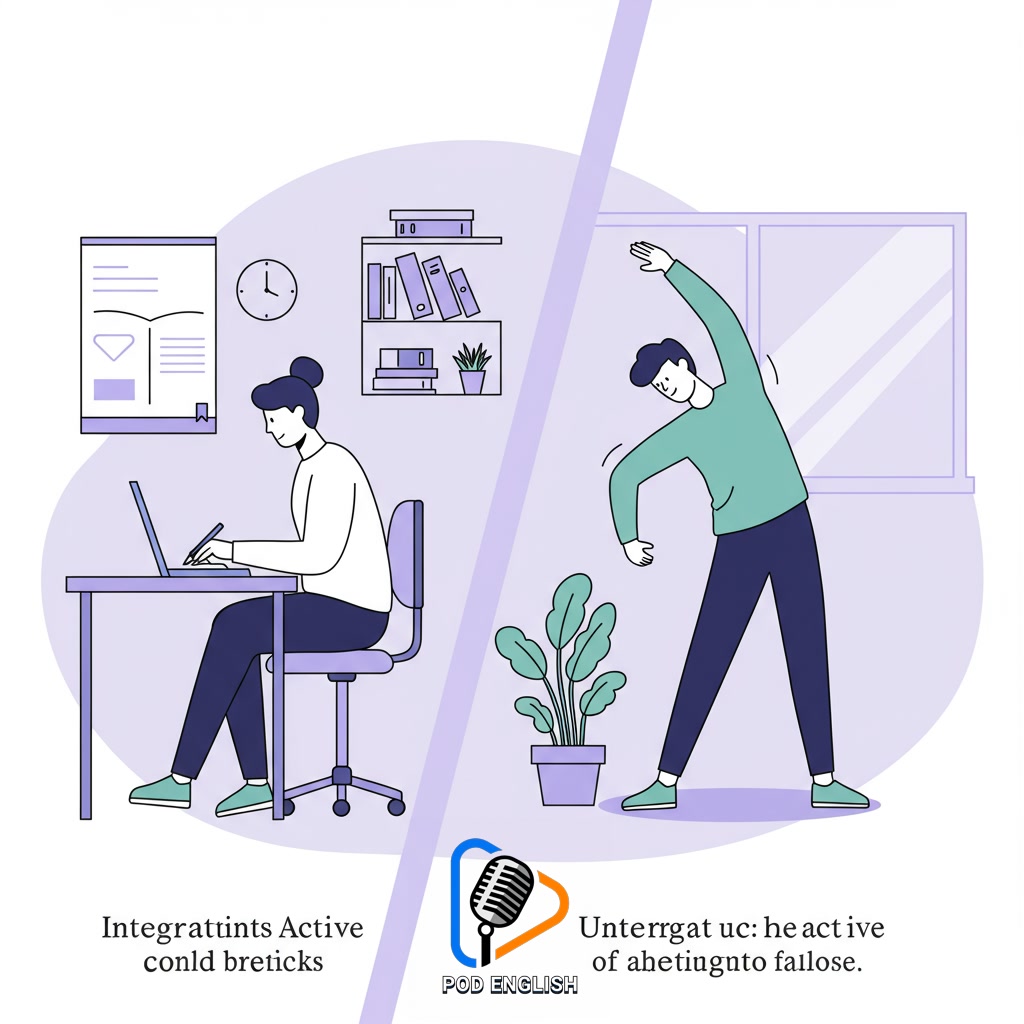Learn English
Active Breaks for Better Focus in English Learning

Incorporating active breaks is a valuable strategy for anyone undertaking English learning. These short periods of movement or mental shift can significantly boost concentration and cognitive function. By integrating regular pauses, individuals can maintain higher levels of focus throughout their study time, ultimately leading to more efficient progress in acquiring English skills.
Table of Contents
- Section 1: The Challenge of Maintaining Focus in English Learning
- Section 2: Understanding Active Breaks: What They Are and Why They Matter
- Section 3: How Active Breaks Enhance Concentration and Cognitive Function
- Section 4: Practical Active Break Ideas for English Learners
- Section 5: Integrating Active Breaks into Your Study Routine Effectively
- Section 6: Beyond Focus: Additional Benefits of Taking Active Breaks
- Section 7: Conclusion: Harnessing Active Breaks for Better English Learning Outcomes
Section 1: The Challenge of Maintaining Focus in English Learning
Maintaining consistent focus is a significant hurdle for many individuals, particularly when engaged in complex tasks like learning English. The process involves absorbing new vocabulary, mastering intricate grammar rules, developing listening comprehension, and practicing speaking – all of which demand sustained mental effort. Long study sessions without breaks can quickly lead to mental fatigue, causing concentration to wane. Thoughts may drift, details can be missed, and the ability to retain information diminishes. This struggle with focus can make the learning process feel slow and inefficient, potentially leading to frustration and reduced motivation. Understanding this challenge is the first step towards finding effective strategies to overcome it and make English learning more productive.

Section 2: Understanding Active Breaks: What They Are and Why They Matter
Active breaks are intentional, short pauses taken during periods of focused study, such as learning English. Unlike simply zoning out or passively scrolling through devices, an active break involves a deliberate shift in activity or mental focus. This could be as simple as standing up and stretching, walking around the room, doing a few jumping jacks, or even just looking away from your materials and focusing on something else for a minute or two. The purpose is not just to stop studying, but to actively refresh your mind and body. These short bursts of physical movement or varied mental engagement are crucial because they help combat mental fatigue, improve circulation, and prevent the cognitive decline that comes from prolonged, static concentration. By integrating these breaks, learners can return to their English studies feeling more alert and ready to absorb new information effectively, ultimately making their learning sessions more productive and sustainable.

Section 3: How Active Breaks Enhance Concentration and Cognitive Function
Active breaks actively combat mental fatigue by providing a necessary shift in activity. When learning English intensely, the brain can become overloaded, leading to diminished focus and reduced cognitive performance. Engaging in physical movement, like stretching or walking briefly, increases blood flow to the brain, delivering more oxygen and nutrients essential for optimal function. Even a short mental break, like listening to a song or looking out a window, can help reset focus and prevent cognitive overload. This allows the mental resources needed for tasks like memorizing vocabulary, understanding grammar, or practicing speaking to recover, leading to enhanced concentration, improved memory retention, and better problem-solving skills upon returning to study.

Section 4: Practical Active Break Ideas for English Learners
To effectively combat mental fatigue while studying English, integrating practical active breaks is essential. Simple activities can make a significant difference. Consider standing up and stretching your arms and legs, or walking around the room for a few minutes. You could also try a quick set of jumping jacks or squats to get your blood flowing. Even stepping outside for a breath of fresh air or simply looking away from your study materials and focusing on something distant can provide a valuable mental reset. Listening to a short piece of uplifting music or doing a brief guided meditation are also effective ways to shift your focus and return to your studies feeling refreshed and more ready to concentrate on learning English.

Section 5: Integrating Active Breaks into Your Study Routine Effectively
Beyond simple stretching, effectively integrating active breaks means consciously scheduling short periods of movement or mental reset into your English study routine. Aim to step away from your materials for 5-10 minutes every hour or so. During this time, consider activities like taking a brisk walk around your room, doing a few light exercises such as squats or arm circles, or even engaging in a brief mindfulness or deep breathing exercise away from your desk. Setting a timer can help make this a consistent habit. The crucial element is to fully disengage from ‘learning english’ tasks during the break. This allows your mind to refresh, preventing fatigue and significantly improving your ability to maintain focus and absorb new information when you return to your studies.

Section 6: Beyond Focus: Additional Benefits of Taking Active Breaks
While boosting focus is a primary advantage, active breaks offer several other significant benefits that enhance the English learning journey. Stepping away from materials, even for a few minutes, effectively reduces mental fatigue and prevents the onset of burnout, allowing learners to sustain concentration over longer periods. Engaging in a brief physical activity or a simple change of scenery can also dramatically lower stress levels and elevate mood, fostering a more positive and receptive state for absorbing new information. This mental and physical reset can sometimes even facilitate better retention as the brain gets a moment to process and consolidate learning. Furthermore, incorporating movement combats the sedentary nature of studying, contributing positively to overall physical health. These combined benefits create a more sustainable, enjoyable, and ultimately more effective approach to mastering English.

Section 7: Conclusion: Harnessing Active Breaks for Better English Learning Outcomes
To conclude, integrating active breaks is a highly effective strategy for anyone dedicated to learning English. By consistently incorporating short periods of physical activity or mental diversion, learners can significantly combat fatigue and maintain peak concentration levels. This proactive approach not only enhances focus but also makes the learning process more sustainable and enjoyable. Instead of pushing through exhaustion, brief pauses allow for mental reset, improved retention, and a more positive attitude towards study. Ultimately, by harnessing the power of active breaks, individuals can optimize their study sessions, leading to more efficient progress and better overall outcomes in their English language acquisition journey. Make breaks a non-negotiable part of your learning schedule.














